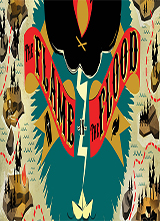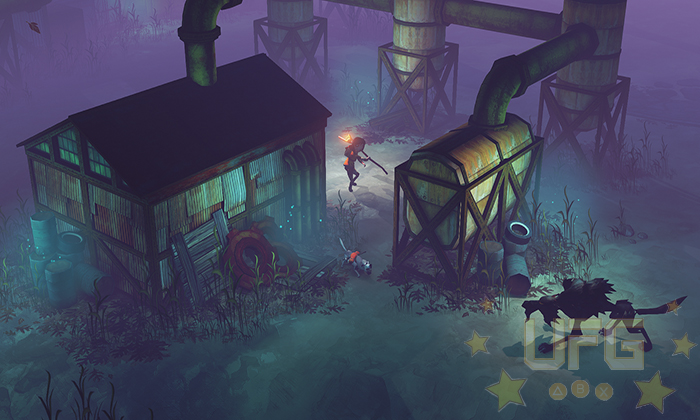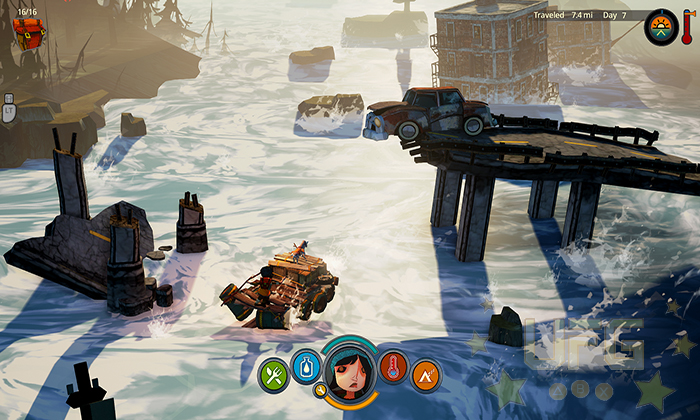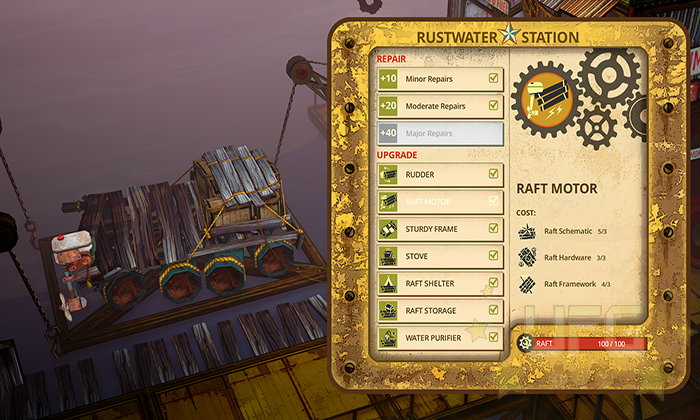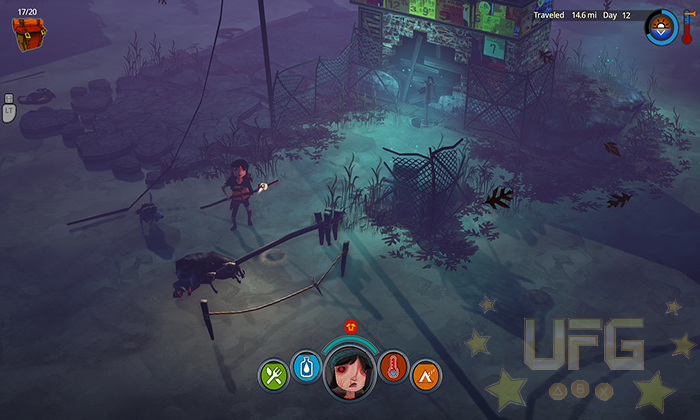The Flame in the Flood
The best thing about popular trends in gaming is all of the innovation that spurs between one big project to next. Turning industry staples on their heads, mixing different genre mechanics , totally throwing out the rules – some of the most celebrated games recently released were inspired by what came before. This is because the developers of these particular titles weren’t content with just copying what worked before. They built upon these trends in a way that allowed them to stand out amongst the crowd and be known for something unique.
That’s how I feel about The Molasses Flood. Being comprised of industry vets, their first title could have easily been another soulless “me too” product. Instead, The Flame in the Flood is everything but. It’s a game that resides within the survival genre, featuring rogue-like elements, crafting/gathering of items, and procedurally generated environments. It’s also an adventure that’s accessible to this genre’s fans and newcomers alike.
The Flame in the Flood follows the journey of a lone survivor, Scout, and her canine companion Aesop. Apparently something bad has happened in her neck of the woods as most of everything has been swallowed up by a mighty river; I’m not sure if the whole earth is flooded or just this part of the planet. Not knowing where to go, she decides to follow a garbled signal resonating from a radio she found. It’s possible that the transmission is coming from a place beyond the raging waters. A slim chance indeed but it’s better than waiting to die. Stuffing some supplies into her bag and grabbing some food, she gets into her raft and sails for what she hopes is salvation.
Of course, being a survival game, Scout will have to fend for herself along the way. This means finding food, crafting tools, and basically becoming Macgyver in a hostile environment. What’s interesting is that she doesn’t scavenge for items in the fashion gamers have grown accustomed to. You see, a lot of time will be spent on the river with the player guiding her raft towards different islands. Each of these locations is marked with an icon that lets the player know what to expect when docking there. For instance, a camp site will always have a lit fire (unless it’s raining), a nice warm place to sleep and some basic supplies. Though there is some overlap in what you’ll find at any given time, most of what’s there is unique to that particular island. What this means is that you won’t be able to find some materials using logical methods; wood isn’t gathered by chopping down a tree using an ax that you crafted out of stone.
Getting needed items won’t be your only concern. Not only do you have to keep our girl fed and hydrated, you also have to make sure she is wearing the right clothing and gets enough rest. The river water is polluted so unless you have a filter, drinking it is out of the question. Crafting a filter is easy if you have the right materials, one of them being cloth. If you can’t find any cloth because none of the nearby islands are known for housing such things, you can always tear up some of your clothes. While this could prove useful in dire situations, upon which I frequently found myself in, you’d have to be mindful of the time. It gets cold at night and if you aren’t able to find shelter or build a fire, you could freeze. The same thing could happen if you’re caught out in the rain; your clothes will get wet, increasing the likelihood of death by hypothermia.
Things are just as rough on the river. Keeping Scout afloat by dodging coming debris isn’t easy. More importantly, because of the strong current, it’s impossible to visit every location you come across. Once you are pulled past them, there is no going back. This forces you to choose your stops wisely. Thankfully there are locations were you can upgrade the raft to circumvent some of this. A sturdier raft can take more hits for instance. A rudder makes it easier to move about but installing an engine could really help you fight the current.
What I like about all of these different factors is that every little choice could mean the difference between living a little longer and dying immediately. All of the game’s survival mechanics are deeply woven together. So much so, that overcoming a difficult situation was always an exhilarating experience. I out smarted Mother Nature, fended off the beasts, and made it safely across the checkpoint (more on that later). And though my happy vibe was usually killed by the impending onslaught of future woes, I was having fun…most of the time.
I would be lying if I said I wasn’t frequently frustrated. There’s always death by something. In more ways than one, the game reminds me of Oregon Trail; there’s an achievement for simultaneously dying of dysentery and dehydration, something often happened while playing that game. Succumbing to snake poison because I couldn’t make the antidote was only slightly less annoying than dying by fire ant bites. Being hunted by blood thirsty wolves wasn’t very fun either. Crashing into rocks wile rafting was a pain until I upgraded it to include a rudder. What topped the crappy cake were the later chapters where the game switched from one extreme atmosphere to the next. At one point the river lead me to desert like islands – there was very little rain, plants and non-threatening animals. I was never cold though. Once I made it through there, I hit the “tropical” islands where I struggled to stay warm because of all of the rain. The abundance of similar island types didn’t help things much as needed materials seemed to always be out of reach.
The going got tough to say the least. Still, I kept at it for those triumphant moments, or for the very least, because of the checkpoint system. The main campaign, which actually has an end, has check points allowing you to spawn back up the river after dying. This eased the tension a little because I wasn’t forced to start from the beginning each time I failed. For those looking for a greater challenge, the difficulty can be increased, essentially turning on permadeath and limiting the available supplies. There’s also an endless river mode for the truly adventurous. Having multiple options of play makes The Flame in the Flood more accessible to…well, everyone.
From the Paper Mache-like visuals to the folk soundtrack by Chuck Ragan that cuts in at just the right moments, The Flame in the Flood is full of charm. Small touches like giving the player a dog (who doesn’t do all that much besides carry extra items) made the constant struggle more tolerable. I’m not sure if I was tricked into pushing forward because of these things; at the very least it made me forget about the cumbersome menus and occasional glitches. That said, I knew that this was a ride I wanted to be on. I had to find out what happened at the end. And for my troubles, I found something special. Not perfect, mind you, but definitely special.
Gameplay:
8
The game can…will lead to frustration. That said, it’s very forgiving campaign helps alleviate the stress. Multiple difficulty settings allow for greater access. There are a few rough edges here and there, but for the most part, it’s a nice addition to the survival genre.
Graphics:
9
The Paper Mache-like visuals adds to the game’s overall charm.
Sound:
10
The ambiance that is created when no music is playing helps to engross the player in the task at hand. When the music does play, it adds the game’s narrative in a subtle yet creative way.
Replay Value:
8
The multiple levels of difficulty and the endless mode warrants an extended play time.
Final Score:
8.8
